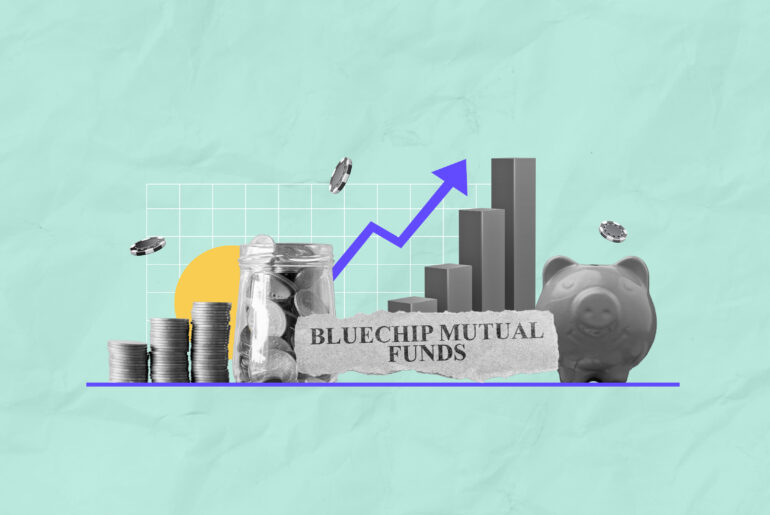Last Updated on May 24, 2022 by Aradhana Gotur
There are different types of ratios and assessment tools to analyse the potential of various investment opportunities. One of the most common ratios an individual uses while judging the potential of an equity fund or forex account is the Sharpe ratio since it compares profitability with respect to the risk. In this article we dive deep into what sharpe ratio is and how to calculate it.
Table of Contents
What is the Sharpe ratio?
Sharpe ratio helps investors understand the return from an investment with respect to the risk involved. It tells of returns earned in excess of risk free rate per unit of volatility. In simple words, it helps in ascertaining the profits earned because of extra risk taken in investing in the security. The risk involved is measured using standard deviation and a higher sharpe ratio is more attractive since it indicates better return yielding capacity for every additional unit of risk taken.
This ratio was created by William F. Sharpe in 1966. He also won a Nobel Memorial Prize in Economic Sciences in 1990 for his contribution towards the origin of the CAPM – Capital Asset Pricing Method. Sharpe ratio is derived from the CAPM model.
How to calculate Sharpe ratio?
To calculate the Sharpe ratio, reduce the risk-free return from the portfolio return, and then find the excess return. Afterwards, this excess return has to be divided by the standard deviation of the portfolio
Formula
Share Ratio = (RP – RF)/SD
where,
RP – portfolio return
RF- risk-free rate of return
SD – standard deviation of portfolio’s excess returns
Portfolio return can be daily, weekly or monthly but it is important to not take these figures during unrealistic situations as the result would not depict an accurate figure. The risk-free rate of return can be the returns generated from risk-free investments like government bonds. When there is a choice between two or more funds, it is always better to pick the one which has the highest sharpe ratio since it signifies the maximum return as compared to the risk involved.
By using the sharpe ratio, we can also assess the past performance of a portfolio and assess whether positive returns from a portfolio are due to an individual taking on too much risk or not. It is important to note that whenever the sharpe ratio comes out negative, it either means investing in risk-free investments is more viable or the portfolio return is negative.
Example of how to use the Sharpe ratio
Let’s assume an investor currently has a portfolio of Rs 5 lakh with an expected return of 10% and a standard deviation of 8%. What would be the sharpe ratio if the risk-free rate of return is 5%?
Sharpe ratio = (10-5)/8 = 62.5%
In this example, our excess return is 5% (Portfolio return – Risk-free return) and risk/SD is 8% which gives us a sharpe ratio of 62.5%.
Advantages of using Sharpe ratio
Fund comparison
Sharpe ratio is highly useful for comparison of mutual funds. For instance, if there are two funds with different allocations to equity and bonds, the sharpe ratio helps us in assessing which is a better fund against a given level of risk and reward. It helps in comparing different funds which might be giving similar returns but the exposure to risk might be much more in one of them.
Risk-adjusted return
Sharpe ratio helps us in assessing a fund’s risk levels. It tells the investor if he has taken any undue risks. Being a quantitative criterion by nature, it provides objective results and tells whether the risk return trade off involved in the investment is worth it or not.
Benchmark
Sharpe ratio tells us how well we are being rewarded for the amount of risk we are taking. It tells us whether the chosen fund is better in comparison with other similar options available and helps in calculating whether it is underperforming or over performing as compared to other available options.
Limitations of using Sharpe ratio
The Sharpe ratio assumes that returns are normally distributed, but in actual market conditions, this is not the case. The returns are unevenly distributed which might depict an inaccurate result at times. While the sharpe ratio is a good measure to assess a portfolio in the long term, in the short run, it might display a false image if there are any abrupt price movements in the market.
Sharpe ratio also does not indicate if a portfolio is concentrated into a single sector, which might be very risky for a retail investor. That is why this ratio must be used in addition to other parameters. The standard deviation figures also assume that price movements in either direction are equally risky.
A common limitation of all accounting ratios is that it is backward looking and is based on historical returns.
Sharpe ratios can be easily manipulated by fund managers. In cases of too high or too low returns, the SD can be very high which would lead to the sharpe ratio percentage being very less. It is possible that in such a case, the fund manager may change the timeframe of assessment in order to portray a better image.
What is the Sortino ratio?
The Sortino ratio was named after Frank A. Sortino, and is just another variation of the Sharpe ratio. This ratio considers only the standard deviation of downside risk instead of the total standard deviation of portfolio returns. Only negative deviation of a portfolio’s return is considered since it gives a better view of risk adjusted portfolio performance.
Formula:
Sortino ratio = (RP – RF)/SDD
where,
RP – expected or actual portfolio return
RF – risk-free rate of return of an investment; Example – Government bonds
SDD – standard deviation of the downside.
The major difference between the Sortino ratio and the Sharpe ratio is that the Sortino ratio assumes only the downside volatility as it divides excess returns by downside volatility instead of total volatility. This ratio is useful to calculate portfolio returns for a given level of bad risk. Sortino ratio only uses downside deviation; it caters to the problem of standard deviation being generic because positive volatility is not something investors are worried about.
Bottom line
Sharpe ratio is a very simple and easy to use financial metric to assess the risk reward profile of a portfolio, which is why it is one of the most popular tools to evaluate various investment opportunities.
Sharpe ratio is used to understand the relation between expected returns and volatility levels of a portfolio that helps compare different funds. But this ratio includes some impractical assumptions which is one of the major reasons why the sharpe ratio should not be looked at in isolation to make investment decisions. The Sortino ratio, often referred to as an improved version of the sharpe ratio, only assumes the downside volatility that matters to the investors.





